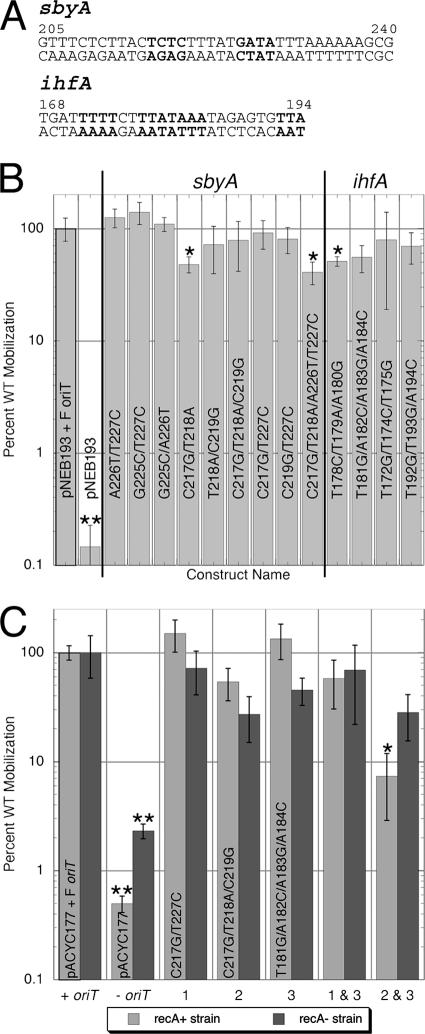FIG. 4.
Mobilization efficiencies of WT and variant sbyA and ihfA constructs. (A) F oriT sbyA and ihfA sequences. Bolded bases indicate regions of substitution. (B) Percent WT mobilization of pNEB193 with cloned wild-type, variant, or no oriT is shown with error bars indicating standard errors of the measurements. Asterisks indicate constructs showing mobilization efficiencies that differed from WT (P < 0.06) as determined by a two-sided Student's t test. Two asterisks highlight mobilization assays resulting in no transconjugates. The value displayed gives the average percent WT mobilization if one transconjugate were present; therefore, the percent WT mobilization of pNEB193 is <0.25%. (C) Percent WT mobilizations of pACYC177 with cloned wild-type, variant, or no oriT are shown with error bars indicating standard errors of the measurements. Light gray bars indicate mobilization assays done in a recA+ strain (ER2738). The dark gray bars indicate experiments done in a recA-deficient strain (ER2267). Bar sets: 1, pACYC177-ForiT C217G/T227C; 2, pACYC177-ForiT C217G/T218A/C219G; 3, pACYC177-ForiT T181G/A182C/A183G/A184C. A single asterisk indicates those constructs showing mobilization efficiencies that differed from WT with a P value of <0.1. The negative control, pACYC177, resulted in no transconjugates whether in the recA+ or the recA-deficient strain, yielding a relative mobilization efficiency of <0.4% in ER2738 and <2.3% in ER2267 (double asterisks).

